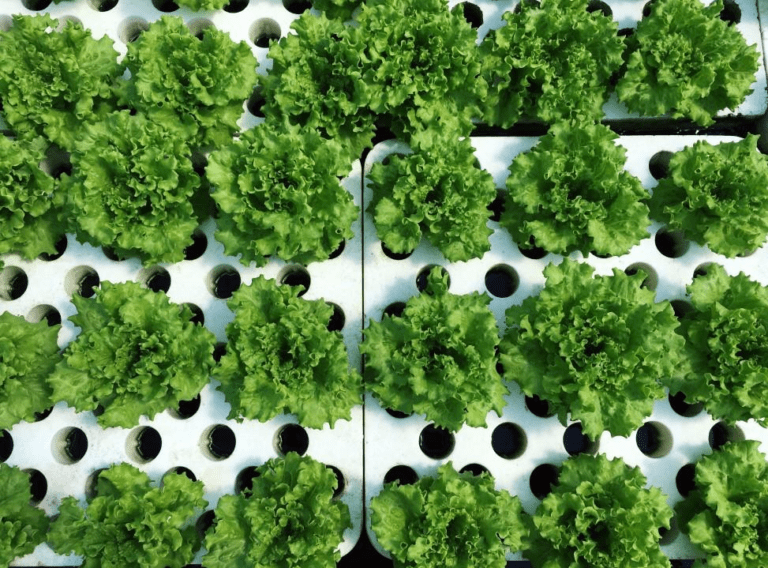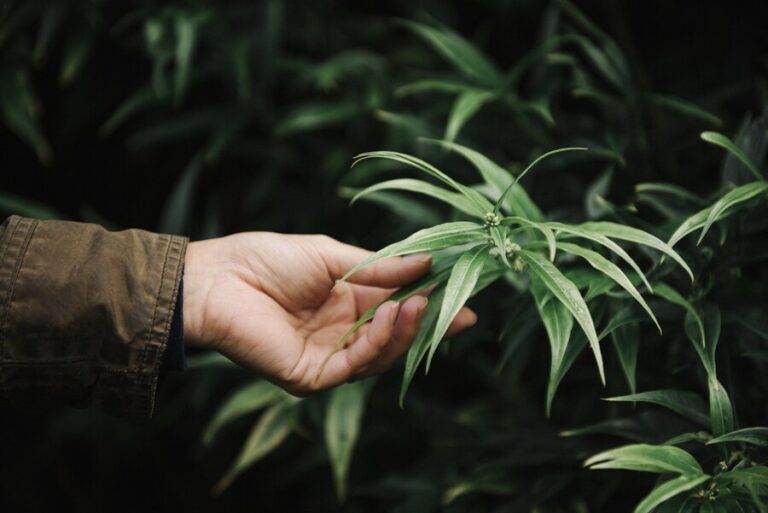Potent Lavender Cultivars: Mastery of Best 31 Varieties of Lavender
Table of Contents
English Lavender Cultivars
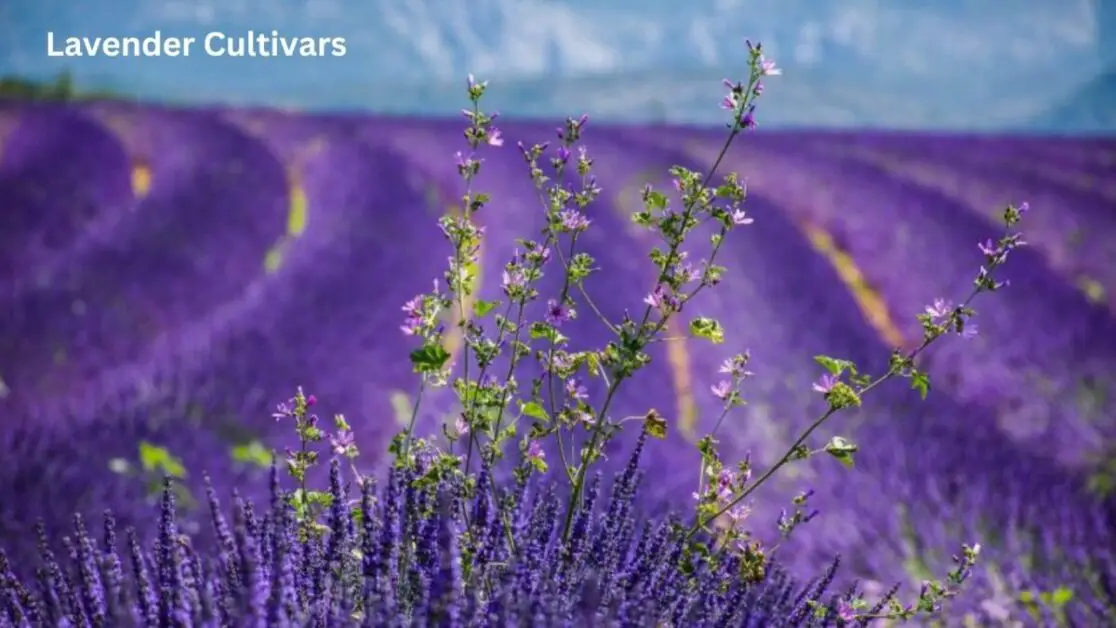
English Lavender Cultivars, known scientifically as Lavandula angustifolia, is one of the most popular and widely cultivated lavender varieties in the world. With its distinctive aroma and beautiful purple flowers, English Lavender is prized not only for its ornamental value but also for its numerous medicinal and culinary uses. This fragrant herb is native to the Mediterranean region and has been cultivated for centuries for its soothing properties and delightful scent.
In addition to its aromatic qualities, English Lavender is also valued for its therapeutic properties. Its essential oil is used in aromatherapy to promote relaxation, reduce stress, and improve sleep quality. Furthermore, English Lavender is a natural insect repellent and can be used in herbal remedies to alleviate headaches, anxiety, and muscle pain. Whether grown in gardens, pots, or fields, English Lavender is a versatile and beneficial plant that adds beauty and functionality to any landscape.
French Lavender Cultivars
Originating from the Mediterranean region, French Lavender, scientifically known as Lavandula dentata, is a unique and charming herb that is beloved for its fragrant blooms and elegant appearance. This lavender variety distinguishes itself with its distinct serrated leaves that emit a sweet and calming aroma, making it a popular choice for both ornamental and culinary purposes. French Lavender thrives in well-draining soil under full sunlight, making it a versatile and low-maintenance plant for gardens and containers.
In addition to its visual and olfactory appeal, French Lavender offers numerous health benefits, such as promoting relaxation, alleviating stress, and aiding in sleep quality. Its essential oils are commonly used in aromatherapy and skincare products due to their soothing properties. Furthermore, this lavender variety attracts beneficial pollinators like bees and butterflies, contributing to a healthy and vibrant ecosystem in garden settings. With its elegant lavender spikes and aromatic foliage, French Lavender is a delightful addition to any garden landscape, adding beauty, fragrance, and therapeutic value.
Spanish Lavender Cultivars
Spanish Lavender is a striking and aromatic herb that is popular for its vibrant purple flowers and unique fragrance. Also known as Lavandula stoechas, this variety of lavender is native to the Mediterranean region and thrives in warm, sunny climates. Its distinctive pineapple-shaped flower heads make it a standout in any garden or landscape.
Spanish Lavender is a versatile plant that can be used for various purposes, including ornamental, culinary, and medicinal. In addition to its beautiful appearance and pleasant scent, it is also known for its potential health benefits, such as its calming properties and ability to repel insects. Whether used in flower arrangements, dried bouquets, culinary dishes, or essential oils, Spanish Lavender adds a touch of elegance and charm to any setting.
Portuguese Lavender Cultivars
Portuguese Lavender, scientifically known as Lavandula latifolia, is a species that thrives in the Mediterranean climate of Portugal. It is characterized by its long, slender flower spikes topped with vibrant purple blooms that release a strong, refreshing fragrance. This lavender variety is favored by gardeners for its aromatic properties and medicinal uses, making it a popular choice for essential oils and herbal remedies.
In terms of cultivation, Portuguese Lavender requires well-drained soil and plenty of sunlight to flourish. Its robust nature allows it to adapt to various growing conditions, making it suitable for both garden beds and container planting. Beyond its ornamental value, this lavender species also attracts pollinators, such as bees and butterflies, enhancing the biodiversity of garden spaces.
Italian Lavender Cultivars
Italian Lavender, scientifically known as Lavandula angustifolia, is a fragrant and versatile herb that is prized for its culinary, medicinal, and ornamental qualities. This lavender variety is characterized by its slender, aromatic leaves and compact, bushy growth habit. Italian Lavender is a popular choice for gardeners and landscapers alike due to its lovely purple flowers and strong fragrance, making it a delightful addition to gardens, rockeries, and borders. In addition to its aesthetic appeal, Italian Lavender is recognized for its therapeutic properties, with the essential oil derived from its flowers used in aromatherapy for its calming and relaxing effects.
Italian Lavender thrives in well-drained soil and sunny locations, making it an ideal plant for Mediterranean climates and dry, sandy soils. This resilient herb is drought-tolerant and low-maintenance once established, making it a practical choice for both novice and experienced gardeners. Italian Lavender is also a favorite among pollinators, attracting bees and butterflies with its nectar-rich blooms. Whether used in culinary dishes, homemade skincare products, or simply enjoyed for its beauty and fragrance, Italian Lavender is a versatile and lovely addition to any garden.
Russian Lavender Cultivars
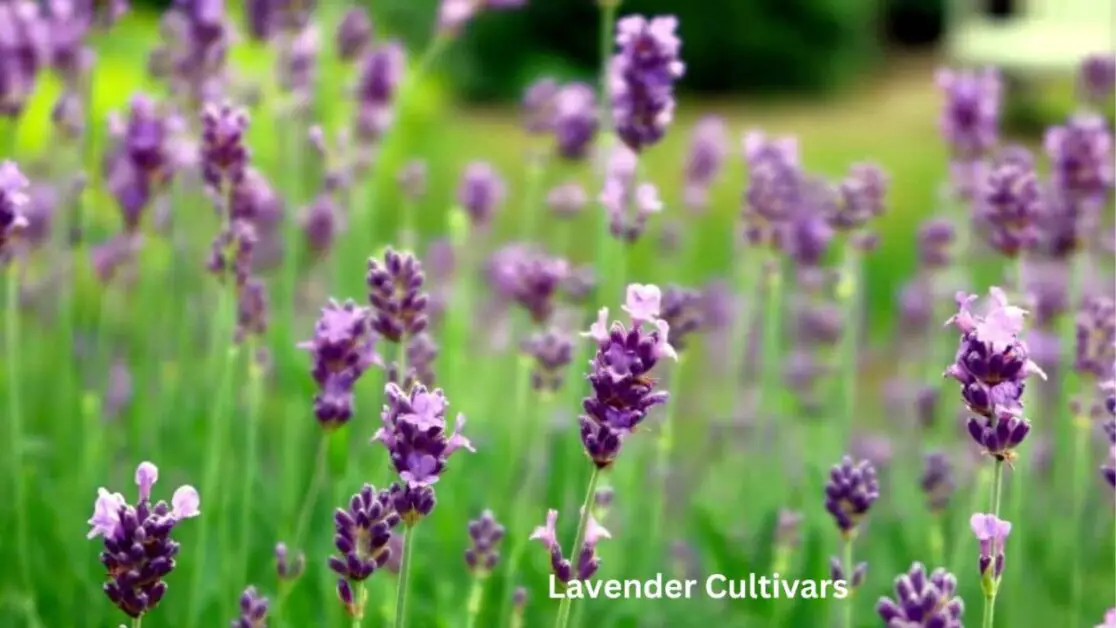
Russian Lavender, scientifically known as Lavandula angustifolia, is a delightful addition to any garden with its fragrant blooms and versatile uses. This lavender variety is renowned for its hardiness and adaptability to various soil types and climates, making it a popular choice among gardeners worldwide. The distinctive aroma of Russian Lavender is calming and soothing, making it a prized herb for aromatherapy and culinary applications.
In addition to its aromatic properties, Russian Lavender is appreciated for its medicinal benefits, including its anti-inflammatory and calming effects. With its beautiful purple flowers that attract pollinators, this lavender cultivar not only enhances the visual appeal of gardens but also supports biodiversity. Whether grown in pots, borders, or as a hedge, Russian Lavender is a low-maintenance plant that thrives in sunny locations, bringing joy to both experienced gardeners and beginners alike.
Egyptian Lavender Cultivars
Egyptian Lavender, scientifically known as Lavandula x intermedia ‘Grosso,’ is a hybrid lavender cultivar that exudes a delightful fragrance akin to a harmonious blend of floral and herbal notes. This lavender variety is revered for its robust growth habit, producing tall, slender stems adorned with clusters of vibrant purple blooms. Noteworthy for its versatility, Egyptian Lavender thrives in a wide range of climates and growing conditions, making it a popular choice among gardeners seeking a low-maintenance yet visually stunning plant for their landscape.
In addition to its ornamental appeal, Egyptian Lavender boasts a myriad of practical uses, from culinary applications to aromatherapy and beyond. The essential oil extracted from its blossoms possesses calming and soothing properties, making it a valuable ingredient in perfumery and holistic wellness practices. Moreover, the dried flowers of Egyptian Lavender are often employed in sachets and potpourris to impart a refreshing scent to living spaces, underscoring the plant’s multi-faceted allure as both a sensory delight and a functional resource.
Spike Lavender Cultivars
Spike Lavender, scientifically known as Lavandula latifolia, is a species of lavender that is distinct from its counterparts due to its more camphoraceous aroma. This lavender variety is widely recognized for its strong fragrance and is often used in aromatherapy for its calming and soothing properties. Spike Lavender is also valued for its high levels of camphor, which make it a popular choice for medicinal and therapeutic applications.
In addition to its aromatic qualities, Spike Lavender is prized for its antimicrobial and antiseptic properties, making it a versatile plant in natural health remedies. This lavender species is known to have a stimulating effect on the respiratory system, making it beneficial for respiratory conditions. Whether used in essential oils, herbal teas, or medicinal balms, Spike Lavender offers a multitude of benefits for both mind and body.
Sweet Lavender Cultivars
Sweet Lavender, scientifically known as Lavandula angustifolia, is a popular herb that is not only adored for its delightful fragrance but also for its various medicinal properties. This aromatic plant is native to the Mediterranean region and is widely cultivated for its oil, which is commonly used in aromatherapy and cosmetics. Sweet Lavender is characterized by its slender, gray-green leaves and clusters of small, fragrant purple flowers that attract bees and butterflies to the garden.
One of the distinguishing features of Sweet Lavender is its calming and soothing properties. The essential oil extracted from this herb is renowned for its ability to promote relaxation and relieve stress, making it a popular ingredient in various beauty and wellness products. In addition to its aromatic benefits, Sweet Lavender is also known for its antimicrobial and anti-inflammatory properties, making it a valuable herb in natural medicine and skincare.
Fringed Lavender Cultivars
Fringed Lavender, scientifically known as Lavandula dentata, is an intriguing lavender variety with unique characteristics that set it apart from its counterparts. One distinctive feature of Fringed Lavender is its serrated or toothed leaves, which give it a textured and ornamental appearance. These edges create an interesting contrast with the traditional smooth and linear leaves of other lavender species, making Fringed Lavender a visually appealing choice for gardeners looking to add diversity to their landscapes.
In addition to its striking foliage, Fringed Lavender also boasts aromatic flowers that emit a sweet and soothing fragrance. The delicate purple blooms of this lavender species are highly attractive to pollinators, such as bees and butterflies, making it a valuable plant for supporting local ecosystems. Gardeners looking to enhance both the visual beauty and biodiversity of their gardens may find Fringed Lavender to be a captivating addition that offers both aesthetic and ecological benefits.
Woolly Lavender Cultivars
Woolly Lavender, also known as Lavandula lanata, is a charming and distinctive variety of lavender that hails from the Mediterranean region. Its unique silvery-grey foliage and woolly texture set it apart from other lavenders, making it a popular choice for ornamental gardens. This particular species of lavender is prized not only for its aesthetic appeal but also for its delightful fragrance, which is both calming and invigorating.
In addition to its visual and olfactory allure, Woolly Lavender is also valued for its medicinal properties. Known for its anti-inflammatory and antimicrobial effects, this type of lavender has been used in traditional medicine for centuries. Its essential oil is believed to have soothing properties that can help alleviate stress and promote relaxation. Whether used in aromatherapy, as a culinary herb, or simply enjoyed in the garden, Woolly Lavender offers a myriad of benefits for both the body and the soul.
Yellow Lavender Cultivars
Yellow Lavender, or Lavandula viridis, is a unique variety within the lavender family known for its striking yellow flowers. This vibrant and aromatic plant not only adds a pop of color to any garden but also attracts bees and butterflies with its sweet fragrance. Yellow Lavender is a resilient and low-maintenance plant, thriving in well-drained soil and full sunlight. Its golden blooms can be harvested for culinary purposes, such as adding a subtle citrusy flavor to desserts and beverages. Embracing Yellow Lavender in your garden can bring a touch of sunshine and elegance to your outdoor space.
In addition to its ornamental beauty, Yellow Lavender also possesses medicinal properties similar to other lavender varieties. Its essential oils have been utilized in aromatherapy for their calming effects, promoting relaxation and reducing stress and anxiety. Rich in antioxidants, Yellow Lavender offers potential health benefits, including anti-inflammatory and antibacterial properties. Whether used in herbal remedies or as a fragrant addition to potpourri and sachets, Yellow Lavender serves as a versatile and enchanting herb that enhances both the senses and well-being.
Goodwin Creek Lavender Cultivars
Goodwin Creek Lavender, also known as Lavandula x ginginsii ‘Goodwin Creek Grey,’ is a stunning variety of lavender that is prized for its fragrant foliage and beautiful flowers. This cultivar is a hybrid between English lavender (Lavandula angustifolia) and Portuguese lavender (Lavandula latifolia), resulting in a plant that showcases the best characteristics of both parental species. With its silvery-gray foliage and vibrant purple flowers, Goodwin Creek Lavender adds a touch of elegance to any garden or landscape.
In addition to its ornamental value, Goodwin Creek Lavender is also highly prized for its aromatic properties. The essential oil extracted from this lavender cultivar is known for its calming and relaxing scent, making it a popular choice for use in aromatherapy and herbal remedies. This variety is also a favorite among beekeepers, as its flowers attract pollinators and contribute to the health of local ecosystems. Overall, Goodwin Creek Lavender is a versatile and beautiful plant that offers both aesthetic and practical benefits to gardeners and nature enthusiasts alike.
Hidcote Lavender Cultivars
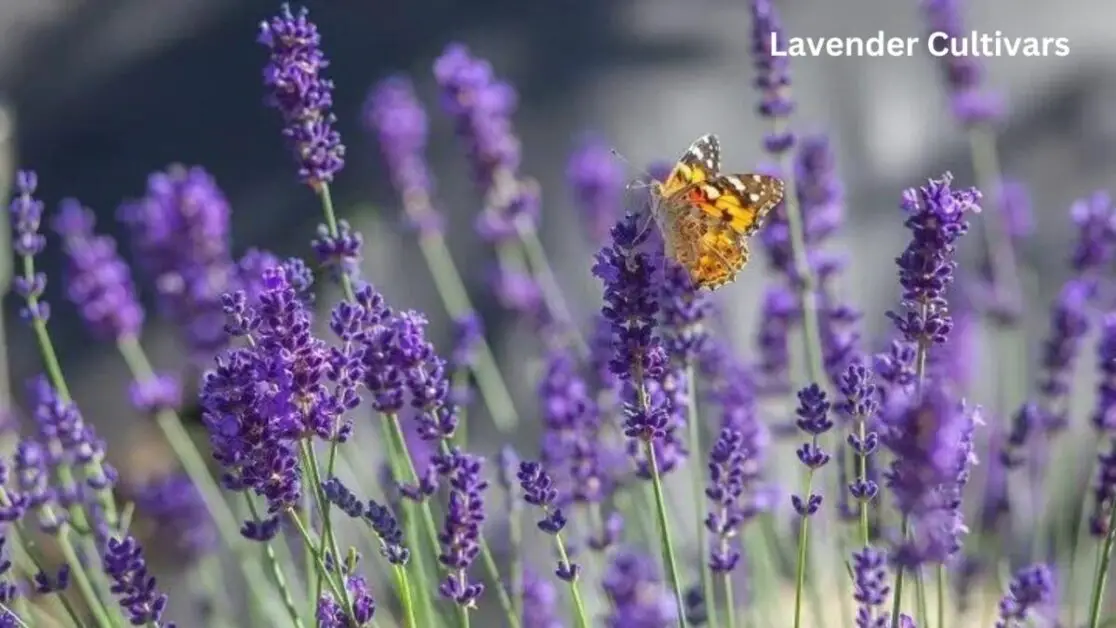
Hidcote Lavender is a popular cultivar known for its compact growth habit and intense fragrance. It is a type of English lavender that boasts vibrant purple flowers atop sturdy stems. This variety is prized for its ability to thrive in a wide range of climates, making it a versatile choice for gardeners looking to add a touch of beauty and aroma to their outdoor spaces.
In addition to its ornamental value, Hidcote Lavender also has practical uses, such as being a key ingredient in essential oils, perfumes, and culinary creations. Its aromatic qualities make it a favorite for crafting sachets, potpourri, and lavender-infused baked goods. With proper care and maintenance, Hidcote Lavender can provide year-round interest in the garden and attract pollinators with its nectar-rich blooms.
Here’s a table exploring 31 types of lavender cultivars:
| Lavender Cultivar | Botanical Name | Description |
|---|---|---|
| 1. English Lavender | Lavandula angustifolia | Known for its sweet fragrance and compact growth habit, making it popular for gardens and aromatherapy. |
| 2. French Lavender | Lavandula stoechas | Characterized by its distinctive “rabbit ear” flowers and strong, camphor-like scent. |
| 3. Spanish Lavender | Lavandula dentata | Features toothed leaves and aromatic purple flowers, thriving in warm climates. |
| 4. Hidcote Lavender | Lavandula angustifolia ‘Hidcote’ | A compact variety with deep purple flowers, perfect for borders and containers. |
| 5. Munstead Lavender | Lavandula angustifolia ‘Munstead’ | Similar to Hidcote but slightly taller, known for its rich lavender scent and hardiness. |
| 6. Grosso Lavender | Lavandula x intermedia ‘Grosso’ | Often used for its high oil content, ideal for making lavender essential oil and potpourri. |
| 7. Provence Lavender | Lavandula x intermedia ‘Provence’ | Known for its long stems and vibrant purple flowers, commonly used in culinary applications. |
| 8. Royal Velvet Lavender | Lavandula angustifolia ‘Royal Velvet’ | Renowned for its deep purple flowers and strong fragrance, excellent for drying. |
| 9. Vera Lavender | Lavandula angustifolia ‘Vera’ | Highly aromatic with gray-green foliage and intense lavender-blue flowers, ideal for sachets. |
| 10. Melissa Lavender | Lavandula x intermedia ‘Melissa’ | A hybrid variety with fragrant silver-gray foliage and pale purple flowers, attracting pollinators. |
| 11. Twickle Purple Lavender | Lavandula angustifolia ‘Twickle Purple’ | Features rich purple flowers and compact growth, suitable for borders and rock gardens. |
| 12. Ellagance Ice Lavender | Lavandula angustifolia ‘Ellagance Ice’ | Boasts stunning white flowers with a hint of lavender, adding elegance to any garden. |
| 13. Phenomenal Lavender | Lavandula x intermedia ‘Phenomenal’ | Highly tolerant of heat and humidity, with silvery foliage and fragrant lavender-blue flowers. |
| 14. Avignon Lavender | Lavandula x intermedia ‘Avignon’ | A vigorous variety with long stems and intense fragrance, perfect for fresh or dried arrangements. |
| 15. Fred Boutin Lavender | Lavandula x intermedia ‘Fred Boutin’ | Known for its compact habit and long-lasting flowers, great for edging pathways and borders. |
| 16. Folgate Lavender | Lavandula angustifolia ‘Folgate’ | Exhibits uniform growth and abundant deep purple flowers, excellent for culinary uses and crafts. |
| 17. Grosso Purple Lavender | Lavandula x intermedia ‘Grosso Purple’ | A robust variety with large flower spikes, favored for its strong fragrance and ornamental value. |
| 18. Seal Lavender | Lavandula angustifolia ‘Seal’ | Features dark purple flowers and a rich, aromatic scent, perfect for borders and mass plantings. |
| 19. Munstead Strain Lavender | Lavandula angustifolia ‘Munstead Strain’ | Selected for its compact growth and long-lasting blooms, suitable for containers and hedging. |
| 20. Nana Alba Lavender | Lavandula angustifolia ‘Nana Alba’ | A dwarf variety with silvery foliage and white flowers, ideal for edging and rock gardens. |
| 21. Otto Quast Lavender | Lavandula x intermedia ‘Otto Quast’ | Exhibits dense spikes of lavender-blue flowers and a strong, sweet fragrance, attracting bees. |
| 22. Richard Gray Lavender | Lavandula angustifolia ‘Richard Gray’ | Notable for its aromatic foliage and lavender-blue flowers, adds color and fragrance to any garden. |
| 23. Sachet Lavender | Lavandula angustifolia ‘Sachet’ | Compact and bushy with fragrant flowers, perfect for containers, borders, and potpourri. |
| 24. Silver Edge Lavender | Lavandula angustifolia ‘Silver Edge’ | Features silver-edged foliage and lavender-blue flowers, providing contrast and texture to gardens. |
| 25. Buena Vista Lavender | Lavandula angustifolia ‘Buena Vista’ | A hardy variety with aromatic foliage and deep purple flowers, great for hedges and mass planting. |
| 26. Canary Island Lavender | Lavandula canariensis | Native to the Canary Islands, this lavender boasts vibrant purple flowers and aromatic foliage. |
| 27. Fernleaf Lavender | Lavandula pinnata | Distinguished by its fern-like foliage and violet-blue flowers, a unique addition to any garden. |
| 28. Gray Spear Lavender | Lavandula viridis | Features slender, gray-green foliage and spikes of pale lavender flowers, attracting butterflies. |
| 29. Goodwin Creek Lavender | Lavandula x ginginsii ‘Goodwin Creek’ | Known for its silvery-gray foliage and profusion of lavender-blue flowers, perfect for containers. |
| 30. Kew Red Lavender | Lavandula stoechas ‘Kew Red’ | Unusual for its red-purple flowers, adding a pop of color to gardens and attracting pollinators. |
| 31. Tumalo Lavender | Lavandula angustifolia ‘Tumalo’ | Admired for its compact habit and intense fragrance, a versatile variety for various landscape uses. |
This table provides a comprehensive overview of 31 types of lavender cultivars, including their botanical names and key characteristics, aiding enthusiasts and gardeners in selecting the most suitable varieties for their needs.
Munstead Lavender Cultivars
Munstead Lavender, scientifically known as Lavandula angustifolia ‘Munstead,’ is a popular variety of English Lavender that is cherished for its compact growth habit and delightful fragrance. This cultivar was introduced by renowned horticulturist Gertrude Jekyll in the early 20th century. Munstead Lavender is characterized by its aromatic purple flower spikes, which attract pollinators such as bees and butterflies to the garden.
In addition to its ornamental value, Munstead Lavender is also prized for its culinary and medicinal properties. The essential oils extracted from its flowers are used in aromatherapy, perfumery, and herbal remedies. This versatile herb can be used to flavor dishes, brew tea, or create soothing sachets and bath products. Munstead Lavender is a versatile plant that thrives in well-drained soil and sunny locations, making it a welcome addition to any garden landscape.
How does Munstead Lavender differ from other types of lavender?
Munstead Lavender is a species of English Lavender known for its compact size and strong fragrance, making it perfect for small gardens or containers.
Can Munstead Lavender be grown indoors?
Yes, Munstead Lavender can be grown indoors as long as it receives plenty of sunlight and well-draining soil.
Is Munstead Lavender drought-tolerant?
Yes, Munstead Lavender is drought-tolerant once established, making it a low-maintenance plant for gardeners.
How do you prune Munstead Lavender?
Prune Munstead Lavender in early spring to promote new growth and maintain its shape. Cut back about one-third of the plant’s height.
Does Munstead Lavender attract pollinators?
Yes, Munstead Lavender is known to attract bees, butterflies, and other pollinators to the garden with its fragrant blooms.



